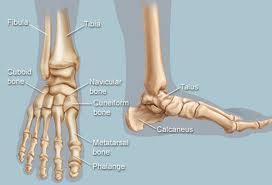Foot cramps, heel pain, ankle pain, toe cramps…Our poor feet, they are our connection to the earth, yet we immobilize them in shoes that often misalign our bodies. There are so many joints in our feet that help our bodies find balance, strength, and of course relaxation. No wonder they complain when we stuff them in shoes and run five miles, or when we sit at a desk all day in heels and then go to the gym for a half an hour of glute and abdominal work. The feet are the great neglected body part. Yet the minute they cause any pain we get angry with them…What if we thought about exercising our feet as much as we think about bicep curls? What if a person added foot pliability and strength exercises to his gym workout? Would his movement become more efficient? Would his knee, hip, and back pain decrease? Well it wouldn’t hurt to try right? In this blog post, I am going to talk about several ways to relieve foot pain, and if you want to experiment and add a foot pliability workout into your life we’ve even created a video to follow below.
 |
| The size of the body parts are related to the amount of nerve endings. Check out the feet |
First let’s find some imagery for the anatomy of the foot. I have found when working with the foot a person can get lost in the anatomical language and never see the beauty of foot movement. Thus when I am thinking about my own feet and when I work with a client’s foot movement, I find myself lost in a sea of metaphorical imagery. I like to think that when in my mind’s eye I see my feet as jelly fish (or any other image that pops into my mind that day) moving through the sea that I might just be connecting my right and left brain to the earth!
Images for the foot and the ankle –
In his book Dynamic Alignment through Imagery, Eric Franklin outlines many ways to use imagery to improve posture, alignment, and movement efficiency. He states, “Put simply, your mind is a large screen filled with the images you have absorbed throughout the day. It is instructed by these images and the thoughts that accompany them. The problem is that most of your 50,000 or so thoughts, flashing images, notions, and so on, are similar to those of the previous day. As the images and thoughts repeat, they slowly but steadily effect a change in the direction the images suggest.” Thus if we think of our foot as a block, or encased in wooden shoes, what kind of feet are we creating, and how might we feel about these feet at the end of the day? In the paragraphs below I have outlined some of the images I like to think about when working the feet…I encourage you to do the same. It’s a fun exercise that can bring our mind’s eye to this very important yet little thought of body part.
Today when I thought of the feet, I thought of the following:
The bones of the foot remind me of a Goshen stone porch or wall that is created by fitting oddly shaped stones together. When a skilled craftsman creates these walls there is stability in the way the stones fit together. The bones of the feet fit together in much the same way. When a person walks the heel strikes and then rolls through the foot and the bones of the foot can then give structure and strength to the gait.
I see each of the three arches of the feet differently. When I think of the lateral arch or the outside of the foot, I think of a stone bridge in which the shape of the bones create the arc in the bridge. When I think of the medial arch, I think of many bones suspended by rubber bands, and when I think of the transverse arch, (underneath the knuckles of the toes) I think of a rippling stream running over many rocks.
These arches work together to make the whole foot like a spring that gives the body buoyancy, and at the same time these arches make the foot pliable so that it can connect us to the ground and increase our awareness of the world around us.
When I think of the musculature around the bones of the foot and ankle I have two different images that work together in my mind. Sometimes I think of the foot as a marionette. A lot of the muscles and tendons that affect the foot are actually found in the lower leg and they move the foot from above. These are the myofascial connections that give the foot its buoyancy. However, there is also the pliable, movable quality of the foot that make it adaptable like silly putty yet alert like millions of tiny night vision goggles…(thinking of images for the body can get a little silly!)

So what are your favorite images for the foot? Are they positive?
I wonder if everyone who reads this post could humor me and try the following:
First: Give yourself a foot massage and think of some images. Ask yourself what your feet feel like. Ask yourself what you want them to feel like. What pictures come to mind?
Next: Now try the exercises in the following video. The video only shows one foot but of course watch it twice so that you can work both feet.
Finally: walk around, how do the bottoms of your feet feel? What’s different? Now notice your neck and low back and hips. How do they feel?
Now let me know. Did this feel useful? What would think of a foot care class at the studio? Feel free to leave a comment or email the studio by clicking here.
Katrina Hawley
Co-owner of The Pilates Studio

















